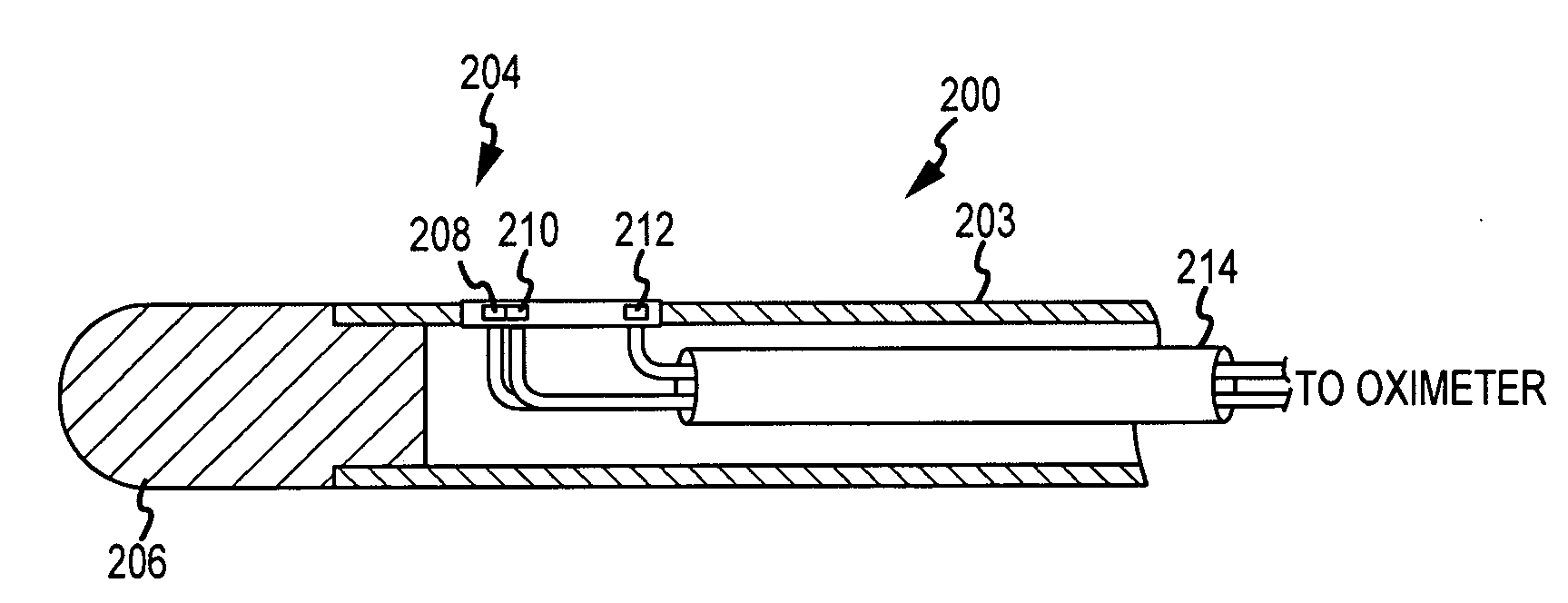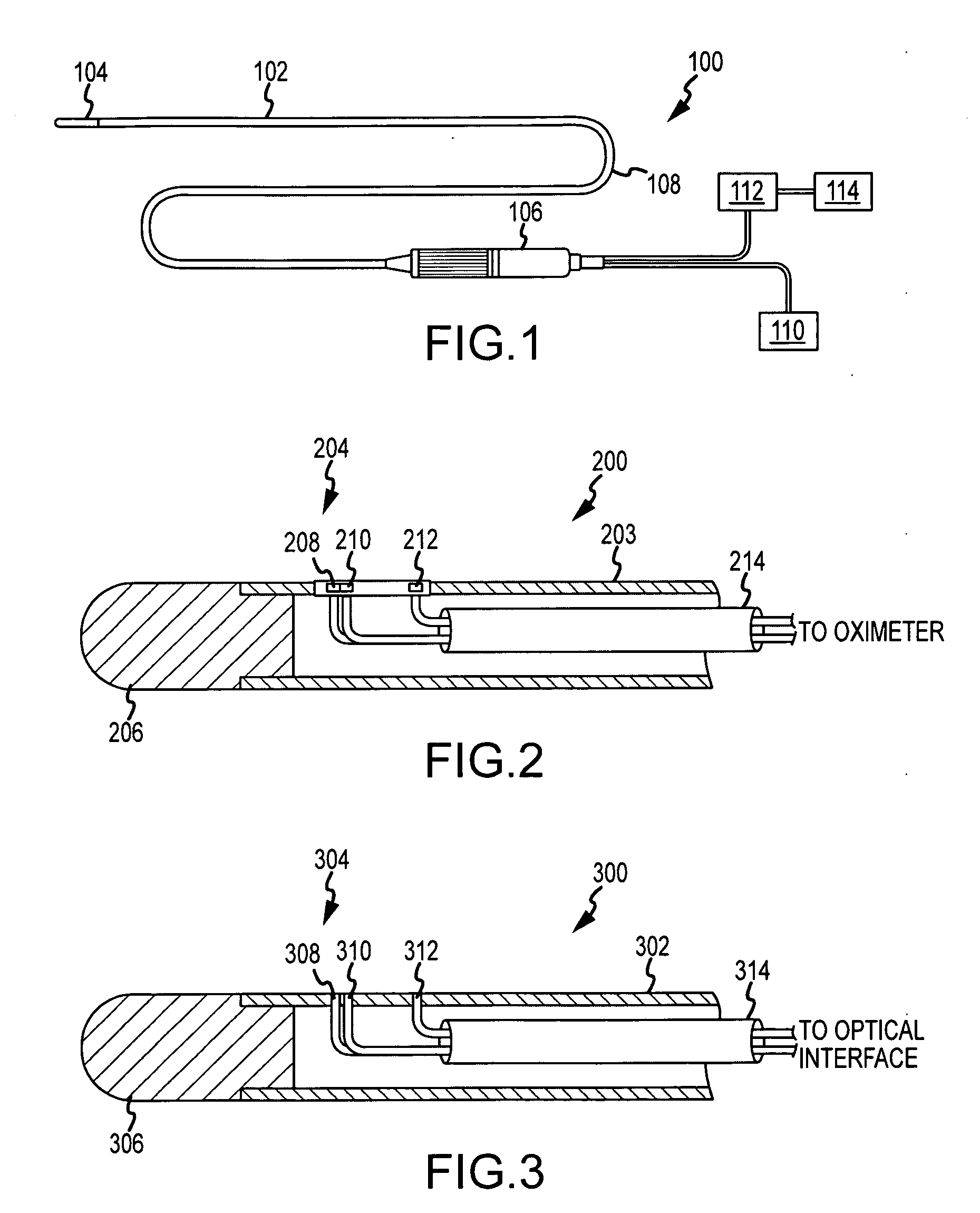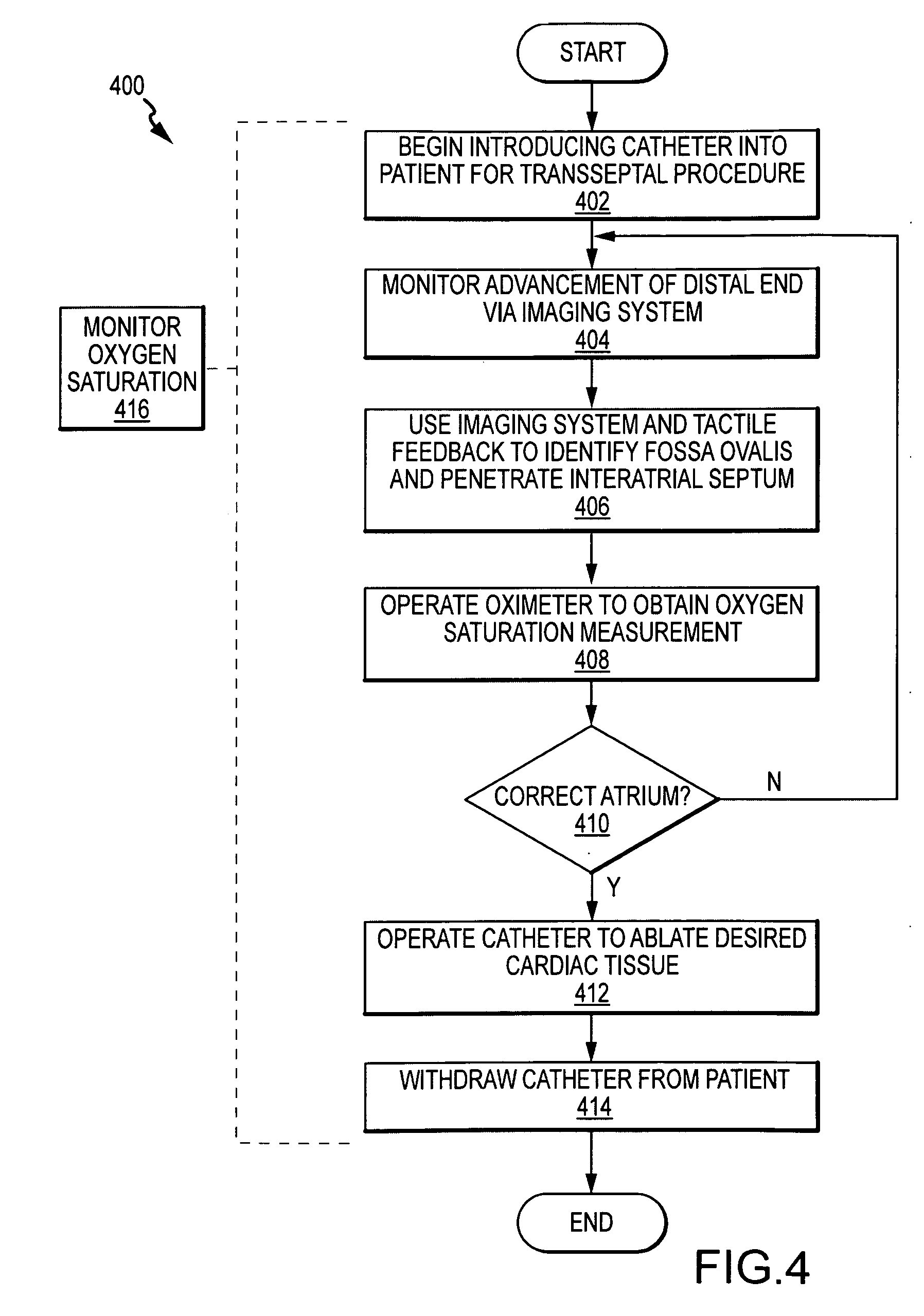Cardiac ablation catheter with oxygen saturation sensor
a technology of oxygen saturation sensor and catheter, applied in the field of catheter positioning, can solve the problems of not being able to easily determine the location and quickly lose, and achieve the effect of high accuracy
- Summary
- Abstract
- Description
- Claims
- Application Information
AI Technical Summary
Benefits of technology
Problems solved by technology
Method used
Image
Examples
Embodiment Construction
[0025]The present invention relates to certain structure and methodology for using blood gas measurements to assist in positioning a catheter for a medical procedure. A variety of blood gas measurements may be performed in this regard, including oxygen saturation measurements, carbon dioxide concentration measurements or other blood gas measurements, and these measurements may be performed optically, chemically or in any other appropriate manner. In addition, a variety of types of medical procedures may be assisted in this regard including, for example, diagnostic and therapeutic procedures. In the following description, the invention is set forth in the context of an ablation catheter including oximetry structure for obtaining oxygen saturation measurements. Moreover, the invention is described with respect to specific procedures including transseptal procedures. While this structure and these applications represent an advantageous context for application of the present invention, ...
PUM
 Login to View More
Login to View More Abstract
Description
Claims
Application Information
 Login to View More
Login to View More - R&D
- Intellectual Property
- Life Sciences
- Materials
- Tech Scout
- Unparalleled Data Quality
- Higher Quality Content
- 60% Fewer Hallucinations
Browse by: Latest US Patents, China's latest patents, Technical Efficacy Thesaurus, Application Domain, Technology Topic, Popular Technical Reports.
© 2025 PatSnap. All rights reserved.Legal|Privacy policy|Modern Slavery Act Transparency Statement|Sitemap|About US| Contact US: help@patsnap.com



